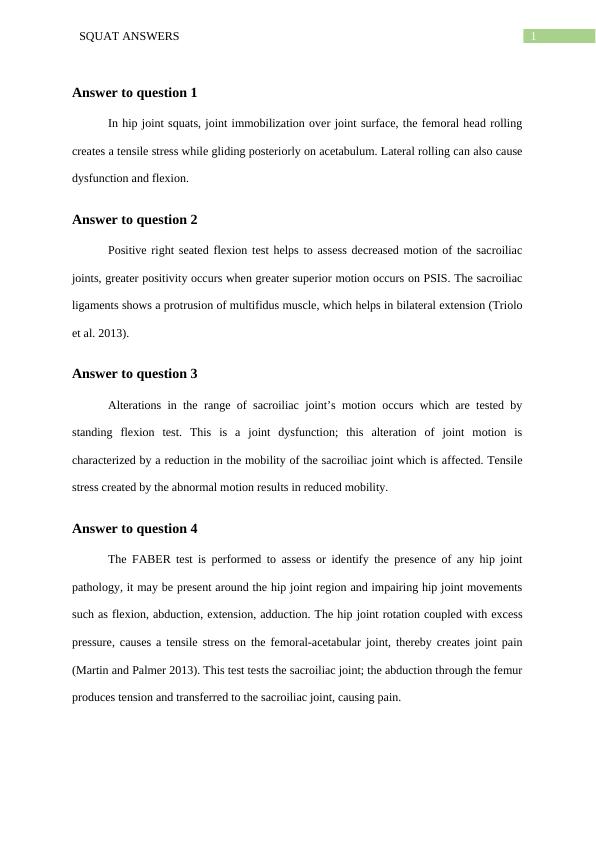Squat Answers: Understanding Hip Joint Squats, Sacroiliac Joint Dysfunction, and Muscle Assessments
This assignment requires describing dysfunctional arthrokinematics and kinesiology in different tests and identifying related muscles and compensatory motions.
Added on 2023-04-26
About This Document
In this assessment we will discuss about squat answers and below are the summaries point:-
-
The text provides answers to 10 different questions related to anatomy and movement in the body.
-
The text explains different tests that can be performed to assess hip and sacroiliac joint dysfunction.
-
The text highlights the importance of understanding the role of different muscles in different movements such as squatting and lunging.
Squat Answers: Understanding Hip Joint Squats, Sacroiliac Joint Dysfunction, and Muscle Assessments
This assignment requires describing dysfunctional arthrokinematics and kinesiology in different tests and identifying related muscles and compensatory motions.
Added on 2023-04-26
End of preview
Want to access all the pages? Upload your documents or become a member.


